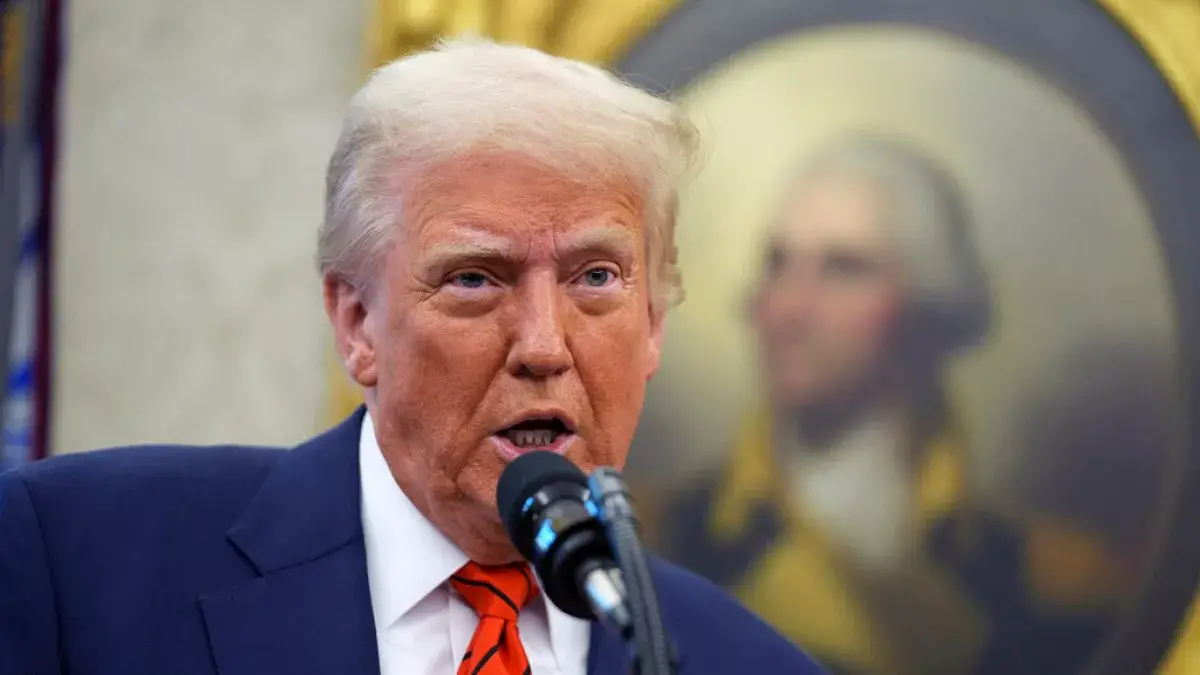Federal authorities have made a significant breakthrough in a sprawling smuggling operation that exploited the busy Ports of Los Angeles and Long Beach. In a coordinated crackdown, eight individuals have been arrested on charges ranging from smuggling and conspiracy to customs fraud. The investigation, which has been unfolding over several months, has revealed an elaborate network that funneled illegal and counterfeit goods from China into the U.S. market—an operation estimated to have imported at least $200 million worth of contraband.
An Intricate Web of Crime
Authorities allege that the criminal network was sophisticated and well-organized, involving corrupt truck drivers, warehouse owners, and logistics firms. These participants worked together to bypass rigorous customs inspections at two of America’s busiest ports. The scheme was designed to take advantage of vulnerabilities within the supply chain, enabling the smugglers to remove entire shipping containers before customs officials could verify their contents.
Once the containers were illicitly cleared, they were unloaded in secretive warehouses and distributed throughout the country. The contraband reportedly included a variety of high-demand products such as luxury items, electronics, and branded merchandise. Many of these goods were not only counterfeit but also potentially dangerous, raising serious concerns about consumer safety and fair market competition.
The Modus Operandi
The smuggling operation was executed with a level of precision and audacity that has shocked federal investigators. According to court documents and statements from customs officials, the criminals employed several key tactics:
- Container Hijacking: The operation centered on the illegal removal of shipping containers from the port terminals before they could undergo mandatory customs inspections. This was accomplished by colluding with insiders who manipulated port procedures.
- Fake Documentation: In order to mislead authorities, the smugglers used fraudulent paperwork that misrepresented the origin and contents of the containers. This helped them pass through preliminary checks undetected.
- Corruption and Bribery: Key elements of the scheme involved bribing port officials and logistics personnel. These corrupt practices allowed the criminals to manipulate internal systems and divert shipments without triggering alarms.
- Domestic Distribution Network: Once the goods were smuggled out of the ports, they were quickly distributed via an extensive network of transport companies, including truck drivers and regional logistics firms. This network ensured that the contraband reached markets across the United States, undermining legitimate businesses and endangering consumers.
The Arrests and Charges
Federal authorities have arrested eight individuals linked to the smuggling operation. The defendants now face an array of charges, including:
- Smuggling: Illegally transporting goods into the United States by evading customs inspections.
- Conspiracy: Collaborating with multiple parties to orchestrate and sustain the fraudulent operation.
- Customs Fraud: Tampering with or breaking customs seals to prevent the proper verification of shipping containers.
These charges underscore the extensive reach and impact of the network. By flooding the U.S. market with illegal products, the operation not only deprived legitimate businesses of revenue but also posed significant risks to public safety.
The Mastermind at Large
Despite the arrests, the investigation is far from over. Authorities have revealed that the alleged mastermind behind the entire operation remains at large and is believed to be in China. Federal agencies are now collaborating with international law enforcement bodies to track down the fugitive. The cross-border nature of this case highlights the complex challenges faced when combating international smuggling networks.
The involvement of a suspected mastermind in China further complicates the situation. It raises questions about the level of coordination between domestic and international criminal enterprises, and the ways in which global supply chains can be exploited by sophisticated networks. Efforts to capture this individual are ongoing, with diplomatic channels and inter-agency cooperation playing crucial roles in the pursuit.
The Impact on U.S. Markets and Consumer Safety
The revelation of this $200 million smuggling scheme has significant implications for both the economy and consumer safety. By importing counterfeit and potentially hazardous goods, the operation disrupted the market for genuine products, harming established brands and putting consumers at risk. In sectors like electronics and luxury goods, counterfeit items can lead to poor performance, safety hazards, and unfair competition for legitimate businesses.
Moreover, the infiltration of counterfeit products into the market can have a ripple effect on global trade. It undermines the integrity of supply chains and weakens regulatory standards, making it harder for authorities to ensure that imported goods meet safety and quality benchmarks. For consumers, this means a higher risk of encountering products that do not comply with established safety standards, potentially leading to accidents, malfunctions, or even health hazards.
Strengthening Customs and Security Measures
In response to the case, federal agencies and customs officials are reassessing current protocols to prevent similar schemes from recurring. Authorities have already begun implementing new measures at the Ports of Los Angeles and Long Beach to tighten oversight and improve the verification process for incoming shipments.
Among the proposed measures are:
- Enhanced Surveillance: Increasing the use of high-resolution cameras and other monitoring technologies to track container movements more accurately.
- Stricter Inspections: Implementing more rigorous random inspections and employing advanced scanning technologies to detect fraudulent documentation or concealed contraband.
- Staff Training: Providing additional training for customs officials to recognize and respond to signs of corruption or procedural manipulation.
- International Collaboration: Strengthening ties with law enforcement agencies in other countries, particularly in regions known for high volumes of counterfeit goods, to disrupt smuggling networks at their source.
These steps are designed to close the loopholes that allowed the smuggling ring to operate with relative impunity. By bolstering the capabilities of customs and security personnel, the authorities hope to protect U.S. markets and ensure that the integrity of international trade is maintained.
Legal and Economic Ramifications
The arrests and subsequent legal proceedings are expected to have far-reaching ramifications. From a legal standpoint, this case may set new precedents regarding the prosecution of international smuggling operations. Prosecutors will likely leverage the evidence gathered—such as surveillance footage, intercepted communications, and forensic analysis of fraudulent documents—to build a robust case against the defendants.
Economically, the operation’s exposure is a stark reminder of the vulnerabilities in the global supply chain. Companies that have been affected by counterfeit goods may seek legal recourse or demand stricter regulations to safeguard their products and brand reputations. Additionally, the incident could lead to a review of trade policies and international agreements aimed at curbing the flow of illegal goods into the United States.
Community and Industry Response
The arrest of the individuals involved in this massive smuggling operation has elicited varied responses from both the business community and consumers. Legitimate businesses, particularly those in industries heavily impacted by counterfeit products, have welcomed the crackdown. They view this as a necessary step to level the playing field and protect the integrity of their brands.
Consumer advocacy groups have also expressed relief, emphasizing that cracking down on counterfeit imports is essential to ensuring public safety. These groups argue that counterfeit goods often fall short of safety standards, and their widespread distribution can lead to serious health and safety concerns.
At the same time, industry experts warn that combating international smuggling networks requires a sustained and coordinated effort. They caution that while the arrests are a significant victory, much remains to be done to dismantle the entire network and prevent future schemes. This case serves as a critical test of the effectiveness of new measures and inter-agency collaboration, highlighting both the progress made and the challenges that lie ahead.
International Implications and Diplomatic Challenges
The transnational nature of this smuggling operation brings into focus the broader challenges of international law enforcement. With the alleged mastermind believed to be in China, the case underscores the necessity for strong diplomatic ties and cooperation between the United States and foreign governments.
International collaboration is vital for several reasons:
- Extradition and Legal Cooperation: Securing the arrest and extradition of high-profile fugitives requires robust legal frameworks and bilateral agreements between nations.
- Intelligence Sharing: The success of such operations often hinges on the timely exchange of information between international law enforcement agencies.
- Joint Operations: Coordinated efforts, such as joint task forces and multinational investigations, can significantly enhance the ability to dismantle complex smuggling networks.
- Trade Policy and Regulation: Addressing the root causes of counterfeit production and smuggling also involves working closely with other countries to enforce quality standards and combat corruption.
Diplomats and international law enforcement officials are likely to use this case as a catalyst for strengthening cooperative measures, ensuring that smuggling rings have fewer safe havens in an increasingly interconnected world.
The Road Ahead: Capturing the Mastermind
While the arrest of eight key individuals marks a major victory for federal authorities, the hunt for the alleged mastermind of the operation continues. Believed to be operating out of China, this elusive figure remains at large. International law enforcement agencies, working in tandem with U.S. authorities, are intensifying efforts to locate and apprehend the fugitive.
The capture of the mastermind would not only bring a sense of closure to this high-profile case but also serve as a potent deterrent to other criminal networks engaged in similar illicit activities. As the investigation unfolds, it is likely that additional arrests and revelations will come to light, further dismantling the smuggling ring and shedding light on the intricate methods used to exploit weaknesses in the supply chain.
Conclusion
The arrest of eight individuals in connection with the large-scale smuggling operation at the Ports of Los Angeles and Long Beach is a significant milestone in the ongoing battle against illegal and counterfeit imports. With an estimated $200 million worth of contraband flooding the U.S. market, this case highlights the serious consequences of corrupt practices and the exploitation of vulnerable points in the global supply chain.
Federal authorities are now not only focused on prosecuting those involved but also on strengthening customs and security measures to prevent future occurrences. As the investigation continues and efforts to capture the elusive mastermind intensify, this case stands as a testament to the power of coordinated law enforcement and international collaboration.
The broader implications of this case are profound. It underscores the urgent need for robust oversight in government procurement processes and the importance of safeguarding public markets from illicit activities. In an era where counterfeit goods pose both economic and safety risks, the dismantling of such a vast smuggling network is a victory for legitimate businesses, consumers, and the integrity of international trade.
While much remains to be uncovered, the strides made by federal authorities in this case offer hope that even the most sophisticated criminal operations can be brought to justice. As more details emerge and the legal proceedings unfold, this landmark case is poised to reshape our understanding of modern smuggling networks and the measures necessary to combat them.
As we follow the developments in this evolving story, the focus remains on ensuring that justice is served and that steps are taken to protect our economy and public safety. The dedication of federal and international law enforcement agencies in dismantling these illicit networks is a powerful reminder of the ongoing battle against corruption and fraud in our global supply chain. Stay tuned for further updates as this significant case continues to unfold.

